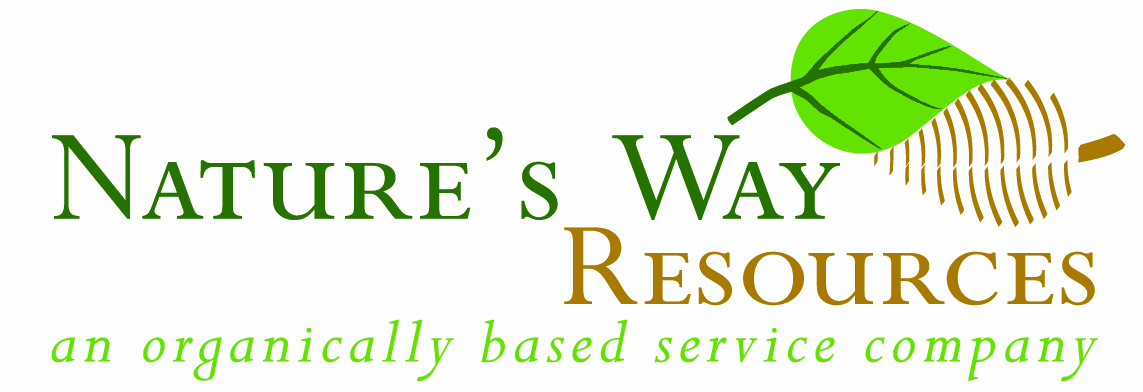
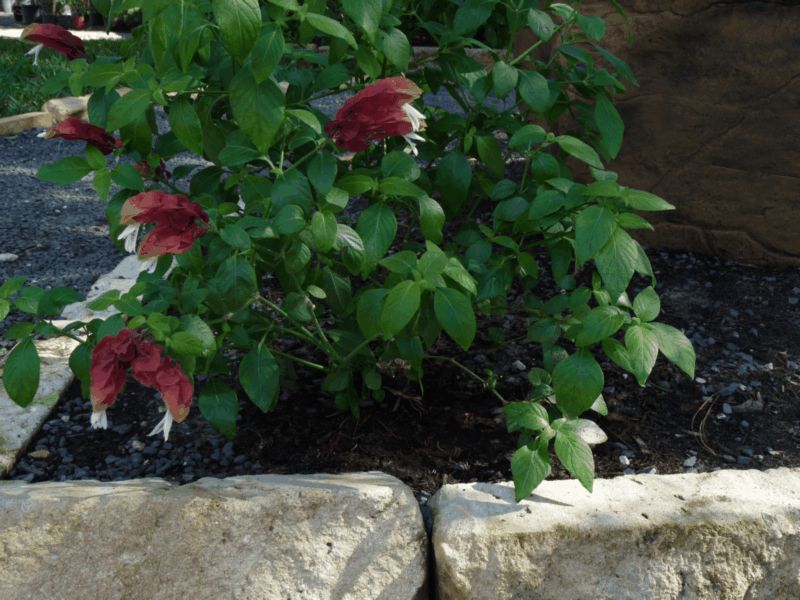
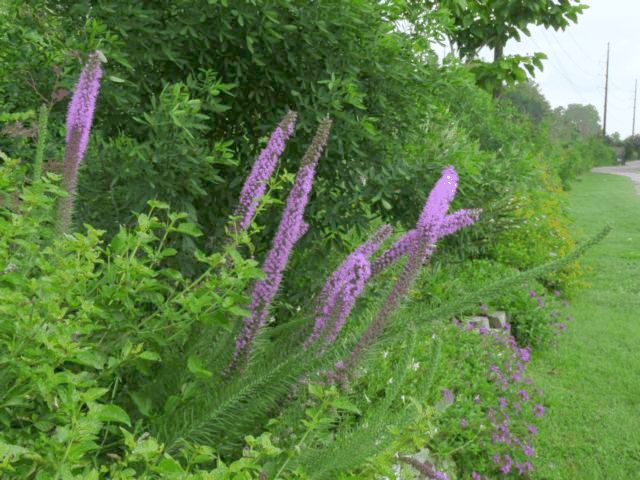
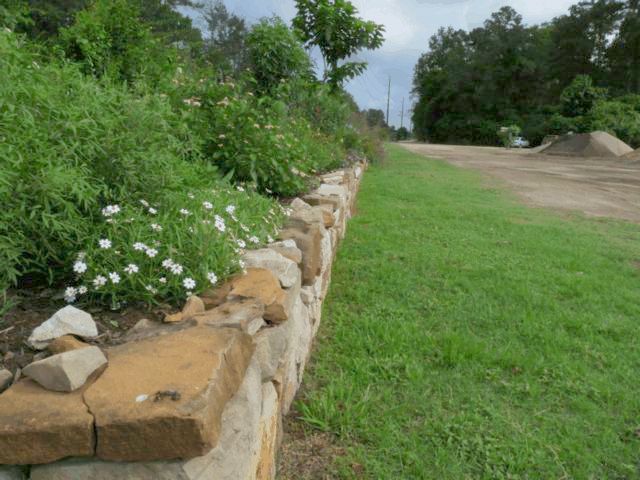
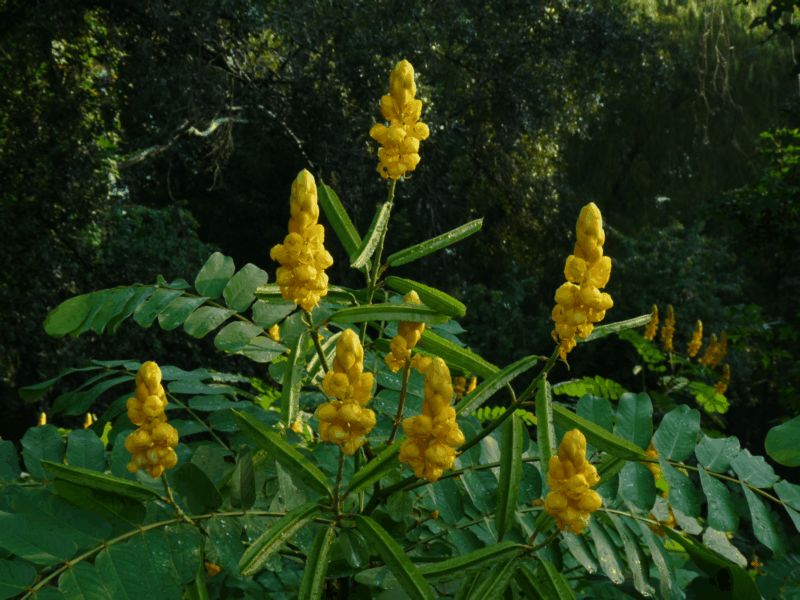
COMMON QUESTIONS AND ANSWERS ABOUT COMPOSTING
1) What is compost or composting? Composting is, in the simplest terms, the biological reduction of organic wastes into humus. It is a natural process used by nature to return nutrients contained in organic materials that were once alive, to the soil. Compost is composed of complex carbohydrates, proteins, amino acids, peptides, humic acids, fulmic acids, enzymes and beneficial micro-organisms. Whether composting takes place in a compost pile or on a forest floor, it is the same clean, sweet, earthy smelling material that is so essential for healthy plant growth.
2) Is composting a new process? No! References to using manure and wheat straw in composting was common in biblical times. In fact, the Greek and Hebrew words for compost piles were originally translated "dung piles". Recent archeological discovers clarify that the dung piles referred to in the Bible were indeed compost piles. References to composting have been found on clay tablets dated 1,000 years before Moses was born. Arab writings of the tenth and twelfth centuries have extensive writings on how to compost and its importance to agriculture. Nature was making compost eons before man ever walked on earth. The first recorded commercial composting operation for municipal refuse was started in Holland in 1932 and is still in operation today. In 1971 the EPA estimated that there was over 2,600 composting operations in the world outside of the United States. The EPA estimates that there are over 10,000 composting operations in the United States of all sizes.
3) How is compost produced? Compost is produced by the breakdown and conversion of materials such as grass and tree trimmings, food waste, scrap paper, cardboard, manures, scrap wood, liquids, bio-solids and others, that are composed of organic compounds from materials that were once alive. These materials are passed through a grinder, moisture and micro-organisms added and then placed in some form of pile to undergo an accelerated and controlled decomposition process.
4) How does this decomposition take place? The decomposition takes place by the micro-organisms (bacteria, fungi, etc.) literally eating this material and converting it back into simpler and different chemical compounds. These micro-organisms take oxygen (and some nitrogen) from the air and combine it with carbon from the raw material and water to produce compost, CO2, steam and heat. The exact decomposition involves the chemical and physical processes of oxidation, reduction, hydrolysis and thermodynamics
5) Is composting a recycling process, and if so, does it count towards meeting the federal and state recycling laws? Yes! In this area of the country, between 30-35% of all material going into landfills are grass and tree trimmings. If we add food waste, paper, cardboard, lumber, bio-solids and other natural materials then theoretically, 50-75% of our waste stream could be recycled by composting.
6) What do you mean by theoretically 50-75% could be composted? For composting to be successful, a clean, environmentally safe product must be produced that can be sold for use in the horticultural, agricultural, and construction industries. To produce a clean and safe compost, all one needs is clean and safe source material. There are thousands of composting operations in this country and one pattern has become very clear: composting operations that use source separated materials (no contaminants) have been very successful and operations that have used co-mingled collections (with contaminants) have been tremendous failures often wasting tens of millions of tax dollars if government owned and operated. It is a matter of economics and practicality. Most grass and tree trimmings are produced in a source separated manner, hence it is very easy and inexpensive to collect them in a source separated manner. Recent research has shown that much of our food waste from restaurants and grocery stores can be economically collected in a source separated manner and actually save the store money on waste disposal fees in most cases. The rest of the organic part of our waste stream comes from items such as cardboard packaging in our homes such as cereal boxes. This type of waste is typically tossed into the garbage along with dead flashlight batteries, household cleaning agents, empty pesticide bottles, along with plastics, metals, and glass items. One Ni-Cad (Nickel-Cadmium) or Lead-acid flashlight battery contains enough heavy metals alone, to contaminate a large amount of compost, rendering it almost useless. Even though the theoretical limit for composting materials in the waste stream may be as high as 70%, the practical or economical limit is about 40-45% of the total waste stream today.
7) Are there different types of compost? Yes. Compost can vary widely in both nutrient content, disease fighting ability, humus content, etc. These factors are determined by the type of source materials, the mixture (ratios) of this source material (chemistry), the temperature and structure of the piles (physics), the time factor the pile stays at certain temperatures (physics), and others. A knowledgeable scientist can control the composting process to produce customized compost. For example, one might increase the nitrogen content for use as fertilizer or maximize the content of beneficial micro-organism to use for disease control in greenhouse or nursery potting soils. Like any other product, compost quality ranges from excellent to very poor depending on the goals and knowledge of the operator. The process of composting is approached from basically two points of view. The first is waste volume reduction to avoid using up valuable landfill space. The second is a manufacturing process to produce a valuable end product for use in agriculture and horticulture. The purpose or methods chosen for composting greatly affects product quality, cost, and odors produced.
8) What are the two points of view and how do they differ? The first point of view comes from waste management where the goal is to reduce the volume of waste. Engineering techniques are chosen (windrows, in-vessel, etc.) that cause the material's volume to decrease. This is done by converting the solid particles in the waste to gases (water vapor, odors, etc.) and releasing them to the atmosphere. In general, these types of processes offer fast volume reductions (less than 12 weeks start to finish) and require very expensive special equipment. The product produced often has less nutrients since many useful chemicals have been released into the air to achieve the volume reduction and less beneficial microbes. The other point of view is to look at composting as a manufacturing process where the goal is a useful and valuable end product. Simple engineering is generally used (large static piles) that are designed to prevent the loss of volume. Gases produced are absorbed (eaten) by other microorganisms and converted back to useful solids (nutrients). Longer time frames (6-36 months) are required as these piles are left undisturbed for weeks at a time (some operators go for 1 year or more) before turning. There is less volume reduction and fewer gases produced, hence very little potential for odors. Compost operators in Seattle, Washington have gone years without a single odor complaint using large pile technology even with residential subdivisions located within a few hundred feet distance. These operators compost many items prone to producing odors such as fish wastes, produce waste, and sewage sludge.
9) What if the clippings and brush collected for composting have been sprayed or dusted with insecticides and herbicides? There is no exact easy answer without knowing which pesticide or herbicide and in what quantities are present. According to the University of Illinois Center for Solid Waste Management Research, some common herbicides can stay active for one full year. Scientific research on how pesticides break down in the compost pile is just beginning, but the consensus is that some of these products might survive the composting process (this has been proven true as several facilities in the Northeast US that use the windrow (fast) methods have been closed due to herbicide contamination). Whether they do or not depends on which chemical was used. Different chemicals breakdown at different rates. Conditions within the compost pile (heat, moisture, pH, etc.) also affect the rate at which toxins will disappear. The composting method used will also directly affect the breakdown rate. For example, herbicide and insecticide molecules are more readily degraded under combined aerobic and anaerobic conditions (found in large static pile techniques), and the longer the time frame used (large static pile techniques) the greater the breakdown. Composting can greatly reduce the concentrations of these chemicals if any were present. Many of the potentially difficult chemicals have a half-life in a compost pile of only 3 months, hence if longer time frames are used (2+ years), these chemicals are broken down below measurable limits. Scientists at Cornell University have monitored hundreds of lawn and garden chemicals in compost. They found chemical residues in compost at levels far less than that which the Food and Drug Administration allows on food such as fruits and vegetables! Perhaps a better way to estimate the risk of exposure to chemicals in compost is to compare it to your neighbor who sprays their roses with insecticides and fungicides or who treat their lawns for brown patch and chinch bugs. Your health risk or exposure living downwind from such a neighbor is hundreds of thousands (maybe millions) of times higher than from compost. Additionally, compost encourages the growth of many types of bacteria and fungus that have the ability to help detoxify many types of pesticides, simply by using them as food. The high humus and beneficial microbe levels found in compost are the most important property facilitating pesticide degradation.
10) Is it correct that composting of grass and tree trimmings produces no odor? Yes and No. Aerobic (with oxygen) composting naturally does not produce odor unless it is forced or speeded up. The composting process can generate heat up to 180 F in the compost piles with optimum conditions occurring at 140-165 F. This will pasteurize the compost in the process, generally killing any pathogens (or weed seeds) that might have been present in the raw material. Aerobic composting is what happens on the forest floor to the leaves and limbs that fall. It produces a dark humus that has a sweet earthy smell. In a situation where odors might develop the chemistry or physics of the pile is incorrect or the process is being forced (speeded up). Normally, the gases produced by composting are chemically similar to the gases produced by mammals (or ammonia) and rapidly breakdown into odorless components when they are exposed to air (oxygen). Since aerobic composting is a environmentally friendly process, many states only require a 200 ft. buffer from residential areas (300 ft. in Texas). In addition, many communities like to have a composting facility nearby since it is a major recycling center (30% or more of the waste stream), and alleviates some of the need for sanitary landfills in their area. Additionally, with many states banning these materials from landfills, it reduces the illegal dumping of these wastes in neighborhoods, subdivisions, and communities. The other type of composting is anaerobic (without oxygen). This is what happens if green grass cuttings are placed in a plastic bag for a few days. This can, and often does, smell bad. Anaerobic composting is generally a slower process often taking years to breakdown the product and is generally considered not commercially feasible even though research is being done in this area. This is why environmentally aware communities use source separated collection of grass and tree trimmings. They often require the use of special paper bags (or containers) for their collection services which often lowers collection costs. The paper bag (or containers) breathes hence it helps prevent odors from occurring and the paper bag will decompose into compost which helps ensure a clean healthy product (this does not happen if conventional plastic bags are used). Note: The Woods End Research Laboratory in Maine and others have successfully demonstrated fish waste composting, with zero odor.
11) Can sewage sludge (bio-solids) be composted? Yes. Composting of sewage sludge can be done but the factors involved are much more complex both from a scientific point of view as well as governmental regulations. The potential for foul odors are higher, the cost is higher (extra government regulation), and the chance of pollutants in the sludge is much higher. However, with proper planning and site preparation some of the extra problems can be overcome. Several studies have shown that compost made with sewage sludge can be beneficial in limited applications, IF properly done and used on disturbed sites (cleaning up toxic waste dumps). The risk in using sewage sludge is that viruses can survive the high temperatures for some time, and complex chemicals such as polybrominated biphenyl's (PBB's), and heavy metals (lead, cadmium, arsenic, mercury, etc.) cannot be easily removed from the compost. We know now that many of the safety studies published by the EPA during the 1980's on the composting of sewage sludge were falsified. See book by "Whistle Blower" David Lewis, PhD called "Science For Sale" for additional information on the dangers of this type compost. Mankind, at the top of the food chain produces some of the richest manure. If the material entering the sewage system is regulated at the source, preventing toxic contamination from occurring then composting can be a solution and long time frame composting can ensure that some of these chemicals are broken down. Modern water treatment facilities, in compliance with current regulations, produce a sewage sludge that can legally be composted but is full of toxic substances from pharmaceuticals to heavy metals. Note: We have several companies that compost sewage sludge (often called biosolids to hide what it really is) and sell it in the Houston area.
12) Is all compost the same? No. The type and quality of compost depends on several factors. These include the type of source material, the composting technology used, and the time factor in composting and ageing or curing. Additives to the compost such as mineral or lava dust (rich in phosphate) will reduce nitrogen loss due to ammonia. The microbes will convert the phosphate into the exact chemical form needed by plants. An experienced scientist can guide the composting process to produce compost optimized for different applications. For example, oak leaves and pine needles can be added to a basic mixture to produce acidic compost for raising azaleas or add seaweed to increase trace mineral content. Compost found in the market is like any other product, it can be of very good quality or very poor.
13) Does all compost have the same value or cost? Pricing is tied very closely to the cost of land filling the organic material. If landfill rates are very high like on the East or West Coast then compost prices are lower, as avoidance of disposal expense covers the cost of producing the compost. In areas like Texas where landfill rates are among the lowest in the country the production costs come from the sale of the product, hence prices are much higher. In many areas of the country local governments use tax dollars to subsidize the cost of producing compost, hence in those areas prices are much lower. As a result of many factors prices can range from $25 to over $100 per cubic yard as a function of quality and market demand. The national average for a "good" grade of compost was $45.00/cy in 2010. As in all products, one gets what they pay for.
14) How do municipal composting operations compare to private operations? There has been successes and failures for both types of operations. It depends on the reasons for, and the goals of, the composting operation. In general, private companies produce better compost, with less problems, and at lower cost. For example, if odors are being produced, this indicates the chemistry in the pile is not correct. This means that thousands of dollars worth of nutrients (nitrogen or sulfur compounds) are being lost to the air (odors). Private companies have incentive to prevent this from happening, since odors equal loss of profit. The financial compensation to for a private company is based upon the profitability of the operation hence there is a strong incentive to prevent problems like odors. If quality compost is a goal, then most operations are very successful.
15) What type of equipment is required and what does it cost? The type of equipment is dependent on the composting method, the goals for the end product (produce profit or just reduce landfill requirements), land constraints, available funding, etc. Costs can range from a few hundred thousand dollars for a very small operation to millions for a large one. Some communities have been talked into purchasing high technology solutions (Counties in Florida, New Jersey, Minnesota, etc.) to produce compost from co-mingled collection and with price tags of over $40 million dollars (many to most of these operations have been shut down). Private companies generally use lower technology approaches for two main reasons, economics and product quality. For example, in regard to product quality, the use of modified static pile technology with longer composting times (months or more) and at high temperatures, reduces pathogens, particularly viruses and bacteria that would not be killed in windrow methods (2-8 weeks). The minimal equipment is some form of grinder to reduce the source material to small sizes, a water source to wet and maintain moisture in the material, a front end loader to turn and aerate the compost and screening equipment to produce a final product. If the operation is for profit (private), then there is a benefit for larger operations to obtain the economies of scale, reducing the unit cost.
16) Why should we compost? There are many reasons we should compost:
- as a society are running out of landfill space. TCEQ reports that in Texas we had 750 landfills in 1988 but only 247 remain in operation at the start of 1994 with the numbers decreasing each day. As landfills close the cost of garbage pickup rises.
- saves homeowners and businesses money by using a lower cost disposal method.
- alternatives like incinerators pollute both the air and produce hazardous waste
- composting conserves energy
- compost holds water in the soil reducing the need to water lawns and flowerbeds
- composting benefits the environment
- composting reduces greenhouse gasses and helps prevent global warming
- composting reduces the use of dangerous chemicals in agriculture
- Texas A&M has shown that compost is an excellent product (and the most cost effective method) for erosion control and vegetation establishment on right-of-ways, highways and roads, streams and bayous, and many other areas.
- Texas A&M has also found that compost used on turfgrass and lawns greatly reduces water requirements and prevents turfgrass diseases.
- prepare communities for future environmental regulations (30+ states have banned leaves, grass and tree trimmings from landfills).
- eliminates the need for peatmoss in agricultural and horticultural applications reducing the environmental damage to wetlands in mining peatmoss.
- With the growing air pollution problems in the Houston area, outside burning of organic materials is becoming restricted in most areas if not banned altogether.
17) Why doesn't the State of Texas have a landfill ban like many other states? Many states (32) have passed various types of laws banning yard waste from landfills. Preventing organic waste from being land filled is an important step to help reduce global warming. There are two major obstacles in Texas: 1) the most profitable item for waste companies is burying it in a landfill. Texas is home to several of the largest waste companies in the USA. 2) Since the state has no incentives and very few communities have taken action on establishing composting facilities (public or private) there is a lack of facilities to handle all the material.
18) What about home composting systems? Home composting (source reduction), if done properly, is a good way to reduce the waste stream load and has been successful in many communities. The reported problem, is that participation is from a small percentage of home owners and very few businesses. Most homeowners do not have the equipment to grind up tree trimmings or another source of carbon materials to balance the nitrogen in grass cuttings. Compost piles made with grass cuttings alone have the potential to produce foul odors. Compost piles need to be turned to aerate them and most homeowners soon tire of this activity. If adequate moisture is not maintained the composting process stops and the pile can become a home to insects and rodents. Additionally, very few home compost piles get and stay hot long enough for maximum reduction of pathogens. Cities that have purchased compost bins and given them (or sold them at a nominal fee) to homeowners have had much better success. Some of the new Vermi-composting (earthworms) systems are easy to use and require less work, and produce extremely high quality compost hence they are growing in popularity.
19) Why haven't I heard about compost and composting before? The composting industry is no longer new to the United States. Hundreds of studies from the government and universities on the benefits of compost have been published. A couple reasons we do not hear more about compost are: 1) if consumers use compost they do not have the insect or disease problems in their yards hence it would cause a loss of revenue for the producers of those toxic chemicals that advertize in newspapers and magazines (no incentive to report the benefits). 2) Many states do not regulate compost quality hence very bad products are sold as compost and may kill plants 3) something so safe, easy and simple does not have the "flash" as other items.
USEFUL REFERENCES:
A non-technical overview of composting:
The Rodale Book Of COMPOSTING, Deborah L. Martin and Grace Gershuny, Editors Rodale Press, Emmaus, Pennsylvania, Copyright 1992, Published 1993.
The Secret Life of Compost, Malcolm Beck, Acres, USA Press, Copyright 1997, Published 1996, ISBN 0-911311-53-X
Let It Rot - The Home Gardener's Guide To Composting, Stu Campbell, Gardenway Publishing, ISBN: 0-88266-050-0
Science For Sale: How the US Government Uses Powerful Corporations and Leading Universities to Support Government Policies, Silence Top Scientists, Jeopardize Our Health, and Protect Corporate Profits, by David Lewis, PhD., Skyhorse Publishing, 2014, ISBN: 978-1-62636-071-6
A semi-technical overview of composting:
The BioCycle Guide to THE ART & SCIENCE OF COMPOSTING, Edited by the Staff of BioCycle Journal of Waste Recycling, The JG Press. Inc., Emmaus, Pennsylvania, Copyright 1991, Printed Spring 1994.
Technical reference on composting:
COMPOST SCIENCE & UTILIZATION, a quarterly journal, published by the JG Press. Inc., Emmaus, Pennsylvania.
THE SCIENCE OF COMPOSTING, Eliot Epstein, PhD, 1997, Technomic Publishing, ISBN 1-56676-478-5
COMPOST ENGINEERING (The Practical Handbook Of...), Dr. Roger T. Haug, 1993, Lewis Publishers, ISBN 0-87371-373-7
SCIENCE AND ENGINEERING OF COMPOSTING: Design, Environmental, Microbiological and Utilization Aspects, Harry Hoitink, PhD, Ohio State University, 1993. ISBN 0-936645-15-6
Date: October 7, 2016